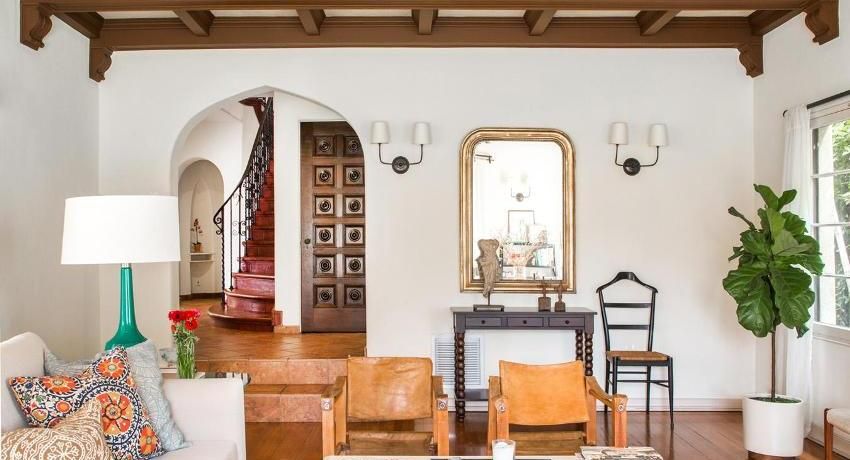Stretch ceilings are no longer a wonder. Beautiful, durable, they give the ceiling a perfect look, repel dust, are not afraid of water. Stretch ceiling can not only close irregularities, it also successfully hides external wiring or plastic pipes. The ceiling is mounted very quickly and completely without dirt, accompanying other repair and construction works. It is only necessary to mask the gap between the canvas and the wall. How to do this can be seen in the photo, many of which are on the Internet. To do this, use masking tape or baseboard for a stretch ceiling.

Masking tape for stretch ceiling
Masking tape, or cap for stretch ceilings, often supplied by the manufacturer in the kit, as well as other accessories for stretch ceilings. Attach it directly to the profile groove. It prevents the formation of dust and dirt that would inevitably accumulate in the open slot.
Helpful advice! Plus camouflage tape for stretch ceiling – the possibility of its repeated use. If it becomes necessary to dismantle the ceiling (flooding, repairing wiring, etc.), the tape can be easily removed and just as easily attached back.

Camouflage tape is used for decorating multi-level ceilings, as evidenced by photos of such examples, as well as when merging paintings. It is advisable to use the decorative insert for stretch ceilings on flat areas, otherwise it will only emphasize all the irregularities.
One of the major drawbacks of the masking tape is its small width. The distance between the walls and the stretch ceiling may be uneven, in some places becoming so wide that the masking tape cannot close it. In this case, it is better to choose a ceiling plinth.
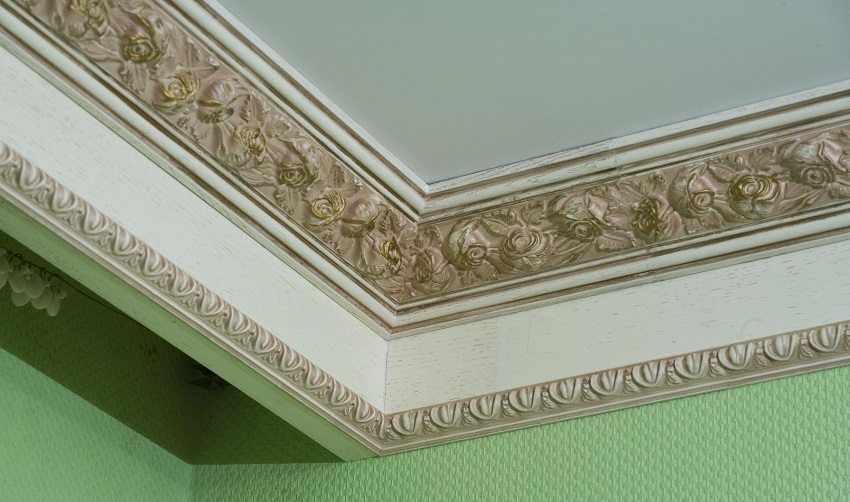
Ceiling skirtings perform not only a camouflage function. Stretch ceilings without baseboards do not look so impressive. As shown in the video and photo examples of interior sites, the plinth for a stretch ceiling can give a room a finished look, make the design more interesting, emphasize the overall style, and advantageously shade the stretch ceiling. What kind of plinth to choose depends only on your imagination. Photos indicate that the plinth for suspended ceilings can be painted in any color, it can mimic stucco or even wood. To pick up a ceiling plinth to your taste and wallet is pretty easy, you just need to figure out what exactly suits you.
Helpful advice! Before you start working on your own, study the materials, read the articles and watch the video on how to glue the plinth on the stretch ceiling.
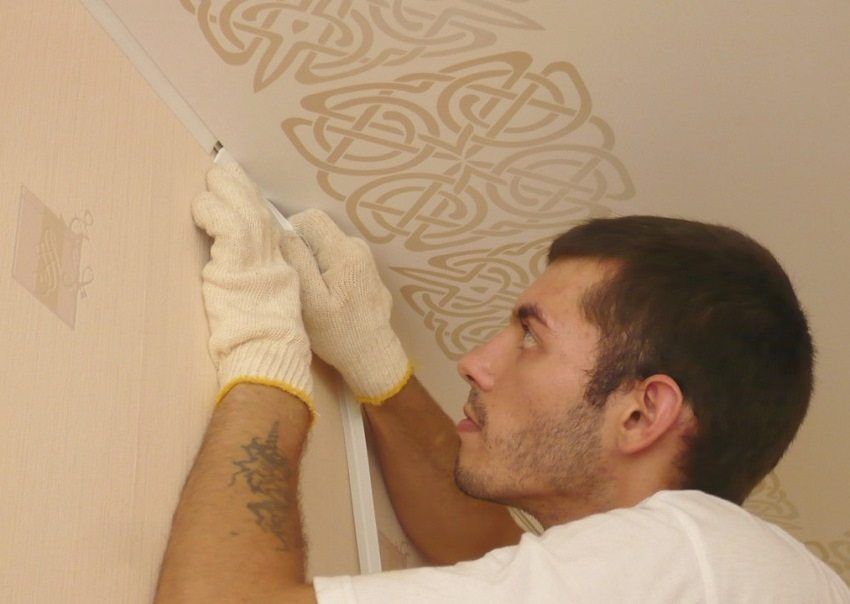
Canvas stretch ceiling subject to natural deformation, depending on temperature changes. In addition, sometimes there is a need to dismantle the ceiling. That is why the baseboard for a stretch ceiling should be fixed only to the walls. More nuances you will learn from the video, how to glue the plinth to the stretch ceiling.
When deciding which plinth is best for stretch ceilings, it is important to know that special requirements are made to the plinth for a stretch ceiling:
- it should be as light as possible;
- the plinth should provide a snug fit to the wall;
- for its installation use a special glue or putty.

If instead of a plinth to choose a wide molding, it will minimize the problem of how to fix the plinth to the stretch ceiling. The moldings were originally designed to be fixed to the walls.
Helpful advice! In the molding, offset by 10 cm from the ceiling, you can put a hidden lighting. This will add effect to your interior. The power supply unit is better not to be placed under the ceiling, since it heats up quite strongly and has a decent weight.

Ceiling skirtings under the stretch ceiling are mainly made from foam (polystyrene foam) and polyurethane. Polyfoam is a very light material. It is well glued, easy to cut and affordable. Its disadvantage is fragility and brittleness, it is not suitable for ceilings of complex construction. The foam burns, releasing toxic substances, it is better not to use it in the nursery and bedroom. Far from any glue is suitable for foam plastic, some aggressive media can spoil it. Expanded polystyrene skirting may turn yellow with time, it is recommended to paint it before attaching.
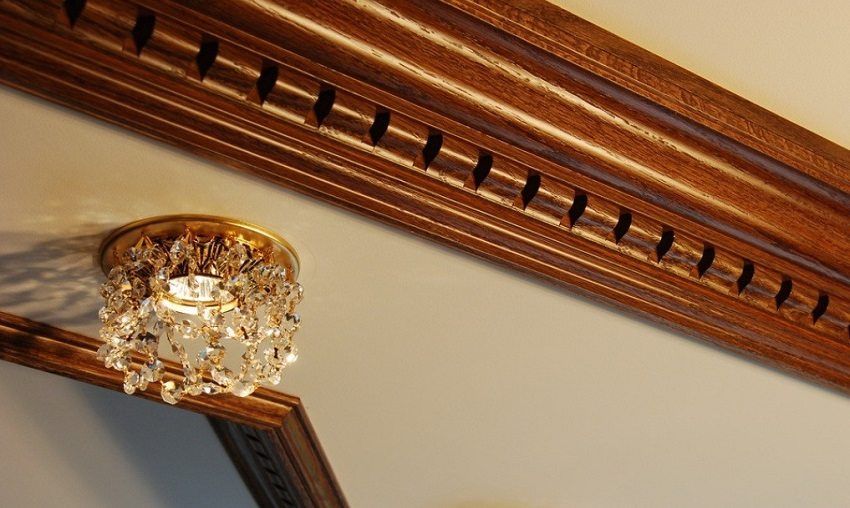
The ceiling plinth for a stretch ceiling made of polyurethane is more flexible, it can take a variety of forms (see photo). Polyurethane is resistant to glue, it can be washed, it is ideal for the bathroom and kitchen. But polyurethane sometimes sags under its own weight. Therefore, it is necessary to install the polyurethane skirting board very carefully, and if it is very wide, it is better to fix it with self-tapping screws and to fix the fastening points.
LED strip for ceiling lighting. Basic accommodation options. The rules and subtleties of the choice of such options backlight. Placing the LED strip on the ceiling, its installation.
Wooden ceiling plinth is rarely used because of the high price of the material and the complexity of installation. In addition, to mask the errors in the joints on a wooden plinth will not succeed. The plastic plinth for a stretch ceiling is also not very suitable, because having a small width and a rigid structure, it will not be able to mask the imperfections of the walls.

The color of the plinth may match or contrast with the color of the ceiling. In the latter case, you must choose a color that fits with the interior of the room. The stores offer a wide range of baseboards for suspended ceilings. How to choose the most suitable, you can tell the consultant. And we propose to watch the video at the end of the article, how to stick the baseboard on the suspended ceiling.
Helpful advice! A wide ceiling plinth with imitation of stucco molding will be suitable for a classic interior, and for a modern youth room – rather narrow strict fillets for stretch ceilings. Photos of such plinths can be found on specialized sites. When choosing a pattern, do not forget that the more complex the drawing, the harder it will be to adjust the corners.

To calculate the required amount of material, it is necessary to calculate the perimeter of the room. This concerns, first of all, premises with a complex geometry. The resulting figure should be divided by the length of the strap of the selected model, and as a result we get the desired amount.
It is recommended that an additional bar be purchased to avoid the need for additional purchases if unforeseen difficulties arise during the work.
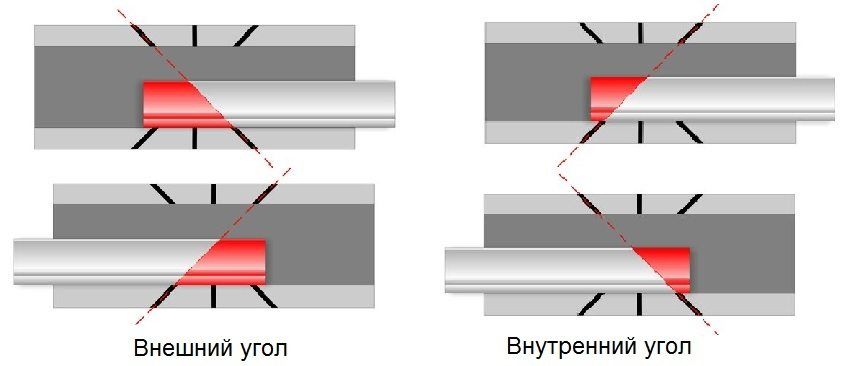
From the tools you will need:
- construction knife, hacksaw, sandpaper;
- miter box This is a special tool, as in the photo, allowing you to easily and gently gash the corners. It is important to check the direction of the cut;
- ruler, tape measure, protractor (if the angles are not perfectly flat);
- simple pencil for marking;
- rubber and metal spatulas.
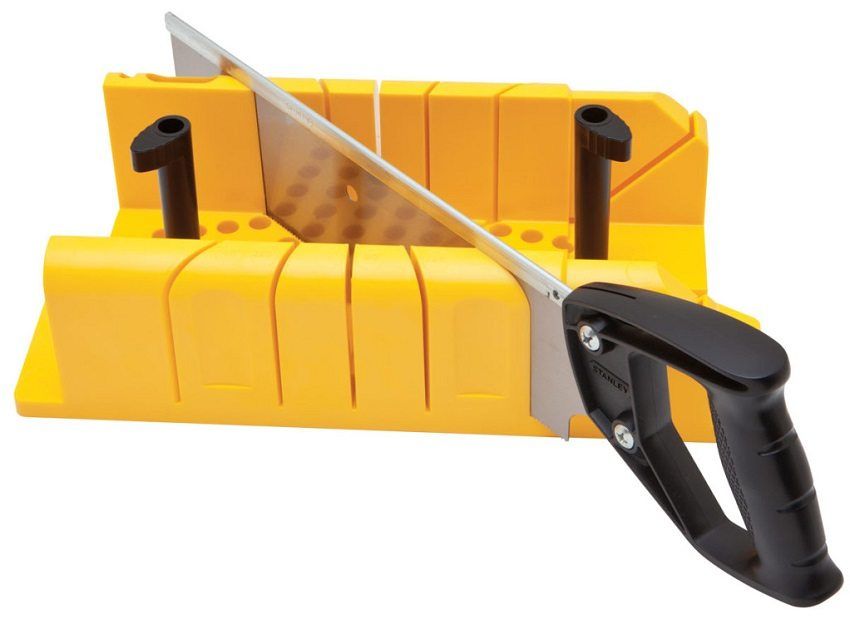
Choosing the adhesive composition, take into account the characteristics of the material of the plinth. Thus, polymer-based glue may contain a solvent that can damage the foam plinth. And for polyurethane it is perfect, due to the reliability of adhesion and a short setting time. Before you glue the ceiling plinth to the stretch ceiling, it is better to check the compatibility of the materials on a small piece.
Well-established so-called liquid nails. They are safe for any kind of baseboard materials and have a very high adhesive ability. Choose a liquid nails need, based on the functionality of the premises. Acrylics are safer and have no sharp smell, but they are not used in rooms with high humidity. For the bathroom and kitchen suitable compositions based on an organic solvent (neopropylene). When performing such work as glueing plinth on stretch ceilings, it is necessary to observe safety rules.

Helpful advice! Professionals often use acrylic based putty. This mixture sets very quickly and is absolutely safe for humans. In addition, she can cover up all the joints of the corners, as well as the gap between the baseboard and the wall.
Before attaching the plinth to the stretch ceiling, the walls must be prepared – cleaned of construction dust and dirt, evened, primed, dried. On top of the wallpaper, you can stick only the skirting foam, under the polyurethane wall must be cleaned.
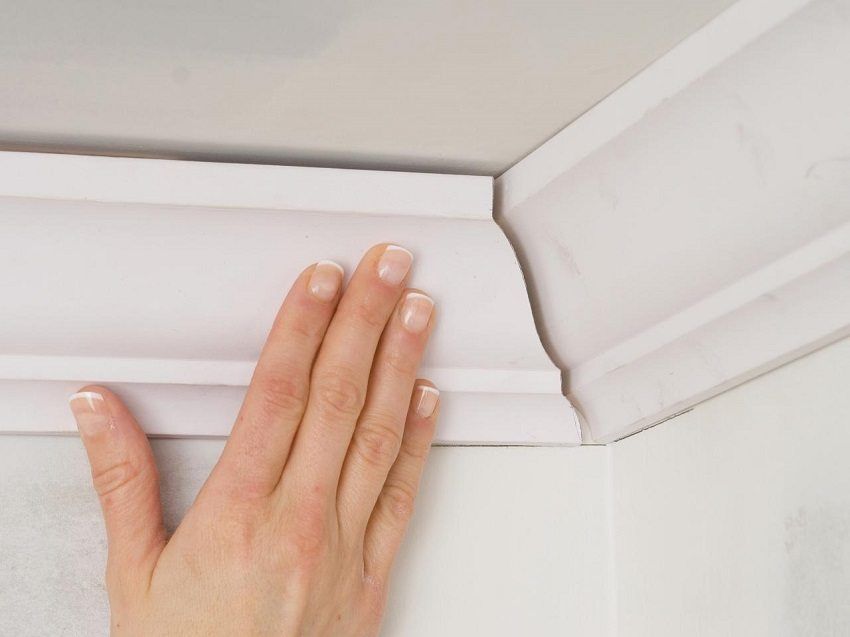
As can be seen in the photo, ceiling skirting for stretch ceilings is best covered with water-dispersion, latex and acrylic paint types. If it is necessary to paint the ceiling plinth, it is better to do it before gluing the ceiling plinth to the stretch ceiling. Otherwise, the ceiling will have to be covered with polyethylene to avoid paint stains.
First, a marking is carried out, along which the bottom edge of the plinth will be glued. The ceiling skirting for a stretch ceiling should be fixed with a distance of 3-5 mm.

You need to start mounting the baseboard from the corners, and then glue the flat sections. If the corners of the room are perfectly smooth, you can purchase ready-made corner elements, their installation will greatly simplify the work. In all other cases, the corners must be trimmed with a miter box and a hacksaw, the edges should be cleaned with emery paper and adjusted as closely as possible.
Glue is applied according to the instructions only on the surfaces of baseboards that are adjacent to the wall, and on the joints, just before gluing the baseboard on the stretch ceiling. If the fillet is too long, you will need the help of a second person to press it evenly. The last elements before attaching, customize the length.

When the baseboard is completely hung, with a sealant or putty you need to disguise small gaps in the joints of the elements.
Installing the plinth of the stretch ceiling is not so much difficult work as hard work. For more confidence, watch the video, how to glue the baseboard to the stretch ceilings.
